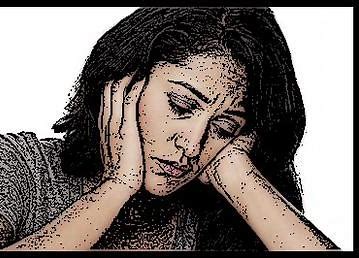“Ambiguous loss”. It’s a vague but bone-deep sense of grief.
It’s hard to define, and many people find it hard to justify when they ‘should
be grateful’.
Yet you’ve probably felt it this past year with COVID, as
you grieve the loss of your normal life and the loss of control.
The term ambiguous loss was coined by Dr Pauline Boss in the
1970s to cover the idea of ongoing losses that can’t be resolved, combined with
an inability to return to “normal”. It was used to explain feelings around
immigration, addiction, divorce and aging parents.
You can see why it applies so clearly to our experience of
the COVID world. There is no foreseeable end, and it feels untenable and
unsustainable.
Dr Sarah Woods, Assistant Professor and Director of
Behavioural Health at University of Texas Southwestern Medical Centre, calls it
“feelings of stress, sorrow, and frustration we feel at the loss of our normal
lives.
“The first thing to know is that feeling distressed due to
ambiguity is normal,” says Dr Wood. “The complicated grief we’re experiencing
due to the shifting sands of our current lives, and accumulation of impalpable
losses, is valid.”

If you’re feeling stressed, it’s not your fault
We’re seeing our old world-order destabilise. Our work,
education and our economy – it’s all rocky and uncertain right now.
Robert Neimeyer, PhD, director of the Portland Institute for
Loss and Transition and professor emeritus of psychology at the University of
Memphis, says, “The losses include our sense of predictability, control,
justice, and the belief that we can protect our children or elderly loved
ones,”
Dr Neimeyer points out that the level of grief we feel is
usually connected to our level of attachment to the thing we’ve lost.
“We’re capable of losing places, projects, possessions,
professions and protections, all of which we may be powerfully attached to,” he
says. “This pandemic forces us to confront the frailty of such attachments,
whether it’s to our local bookstore or the routines that sustain us through our
days. We’re talking about grieving a living loss – one that keeps going and
going.
So what can we do about it?
You don’t have to suffer alone.
Here are ways to help manage this ambiguous grief and loss.
- “Name and claim it,” says Dr Neimeyer.
It can help to give this “wordless suffering” a name, and know that it’s a
feeling shared by so many.
- Understand it. It can help to
understand that this kind of grief fluctuates. It’s perfectly normal to feel
overwhelmed one day, and yet happy and grateful the next.
- Keep social. Do what you can to
maintain your social supports. Even if you can’t see someone and hug them, it
can help to stay connected online and by phone. Talk to your friends and family
about ambiguous loss – you might be surprised by how they open up about their
own experience.
- Stop doom-scrolling. When the
news keeps updating with yet more suffering, it’s tempting to keep refreshing
your news feed. It’s almost like we’re seeking control. Try to give yourself
breaks from the news and limit yourself to a couple of checks a day for urgent
updates.
- Remember your strengths. Look
back on those times when you made it through tough situations, and remind
yourself how resilient you are.